Celebrating World Penguin Day with Preschoolers
Affiliate Disclosure: “This post contains affiliate links, which means I receive a small commission, at no extra cost to you, if you make a purchase using those links.”
World Penguin Day is celebrated on April 25th, to recognize one of the most unique birds on the planet, and encourage people to learn more about them, their environment, their importance to our ecosystem, and the threats they face to becoming extinct.
This celebration started when researchers noticed that the Adélie penguins began their migration from their native Antarctica to the Galápagos Islands around this day each year, where they have their breeding grounds.
I think these birds need to be protected and it is one of the things that we have to teach our kids so they can become their advocates and defenders in the future. To help you with this, and celebrate World Penguin Day with your preschoolers, I put together a pack for you to use. You can find your FREE 31-page long World Penguin Day Science pack which includes facts and real pictures of 9 of my favorite penguins, vocabulary words, and name match activities, ready to be downloaded at the end of this post.
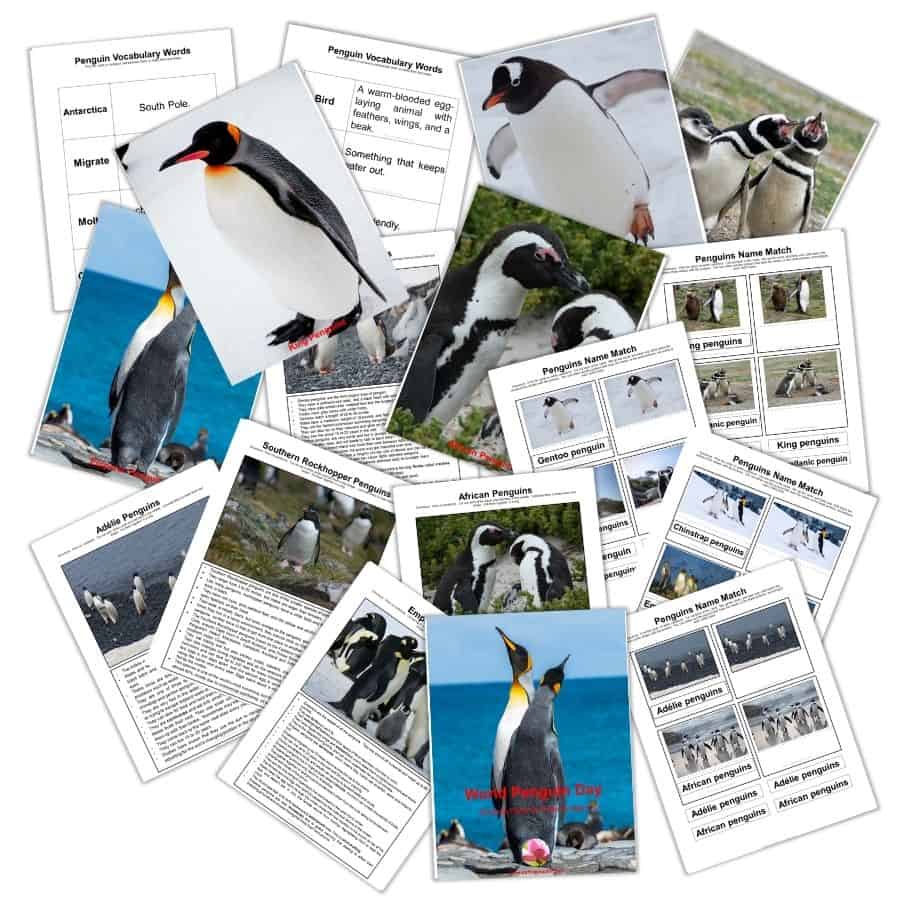
Why is Important to Create Awareness About Penguins?
Like many other species around the world, penguins are in danger. Of the 18 species of penguins or so that exist today, 10 are considered endangered or vulnerable by the International Union of Conservation of Nature (IUCN), and 3 are considered near threatened. That’s terrifying!!!
Why? Since penguins spend most of their lives out at sea looking for food, the overfishing, climate changes, and ocean contamination caused by the pollution that we humans cause have contributed to the decrease of entire populations, which in turn harms the ecosystem.
Penguins, especially around Antarctica and on the Southern Ocean islands, are important players in the balance of the ecosystem for different reasons:
- They control the populations of small fish and crustaceans in their hunting grounds, which could otherwise overgraze on algae and plankton, two important food sources for other species.
- Penguins are also an important food source for many animals, both inland and on the water. Adults and young penguins, and even their eggs serve as food for leopard seals, Orcas, seabirds, foxes, cats, mongooses, and other animals.
- Another important contribution is that they fertilize the landscape with their guano (feces), providing important plant nutrients such as organic carbon, nitrogen, and phosphorous.
General Facts About Penguins
These incredible birds are similar in certain aspects but different from each other in others. These are some of the general facts about penguins:
- Penguins are birds, but they cannot fly in the air.
- They have waterproof feathers.
- Their eyes are covered by a special lens that protects them when they go underwater.
- Penguins can recognize each other calls among a large group of penguins. They make different sounds often described as honks.
- Their unique tongue is covered with spines, which help them catch and hold onto their prey.
- Penguins are carnivores and mostly eat krill, fish, shellfish, and squid.
- Penguins can live on land and in the water.
- They use their wings as flippers and fly through the water very fast.
- Penguins are very sociable birds, and they live in large groups.
- On land, a group of penguins is called a colony. In the water, a group of penguins is called a raft.
- All penguins are black and white which helps them camouflage, as a protection against predators.
- All penguins live in the Southern Hemisphere, but depending on the species, they either live in Antarctica, rocky coastlines, or desert regions.
- Most penguins have the same partner all their adult lives.
- Penguins raise their babies together. They take turns incubating the eggs and feed. When the chicks hatch, they also take turns to keep them warm and feed them, regurgitating food for the chicks to eat.
- Penguins usually lay two eggs, called a clutch. Some only lay one egg.
- They make their nests in guano, which is penguin feces. It maintains a good temperature and protects its eggs and babies from predators.
- In water, their main predators are seals and Orcas. On land, they are hunted by other aquatic birds, felines, and other carnivores.
Types of Penguins
There are 18 different species of penguins, 2 live in Antarctica, and the rest in Sub-Antarctic islands of every continent in the Southern Hemisphere. These species are named Adélie penguin, African penguin, Chinstrap penguin, Emperor penguin, Erect-crested penguin, Fiordland penguin, Galapagos penguin, Gentoo penguin, Humboldt penguin, King penguin, Little penguin, Macaroni penguin, Magellanic penguin, Northern Rockhopper penguin, Royal penguin, Southern Rockhopper penguin, Snares penguin, and Yellow-eyed penguin. These are my favorites:
Adélie Penguin
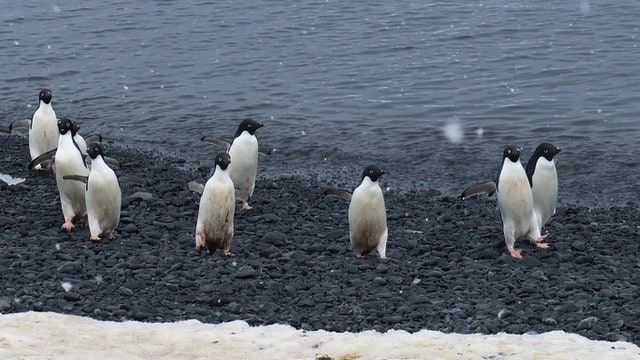
The Adélie is the smallest species of penguin in the Antarctic. They have a black back and head, a white chest and belly, and white rings around the eyes. They are very fast in the water, can dive for food, and hold their breath for up to six minutes. Males use small rocks rolling them back or picking them up with their beaks. They come back to the same nest sites every year and can live 15 to 20 years. Studies have shown that they use the sun to navigate from land to sea.
African penguins
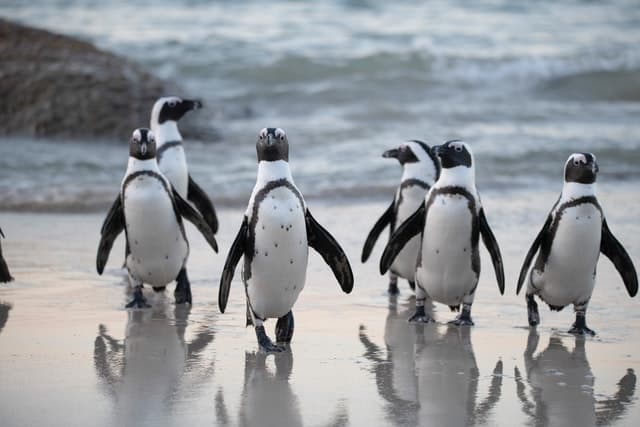
African penguins have a loud donkey-like bray. Adults have a black stripe and black spots on the chest, which pattern is unique for each penguin, like human fingerprints. They have pink glands above their eyes to regulate heat. The female lays a clutch of two eggs in burrows dug in guano or scrapes in the sand under boulders or bushes. Both parents incubate the eggs. They live around 10 to 27 years in the wild, and up to 30 in captivity. The African penguin is listed as endangered and is expected to be extinct within 15 years.
Chinstrap Penguins
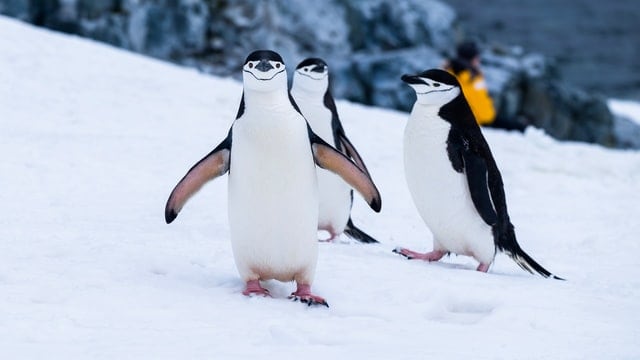
Chinstrap penguins get their name from the narrow black band under their head that looks like a black helmet. Some penguins are born very pale and are called ‘Blonde’ penguins. They are the boldest penguins of all. They can withstand swimming in freezing waters due to their waterproof coat and can dive for about 20 to 30 seconds. They build their circular nests on land using stones and lay two eggs. Both parents incubate the eggs, and the chicks hatch with fluffy gray backs and white fronts. There are more Chinstrap penguins than any other penguins in the world.
Emperor Penguins
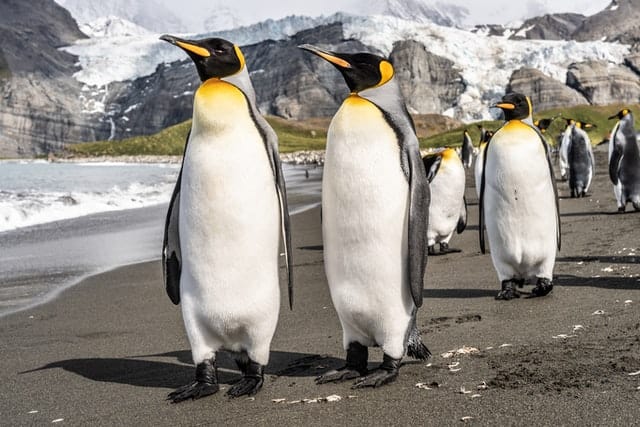
Emperors are the largest of all the penguins. They’re the deepest diving birds and can swim underwater for up to 22 minutes. Emperors migrate up to 75 miles inland across the ice to the colony. They can live up to 20 years in the wild and 50 years in captivity. They are only found in Antarctica. They are the only penguin species to live and breed on the open ice in winter. The female lays one egg and carefully passes it to the male who keeps it warm through the winter (more than two months) in the pouch on top of his feet and doesn’t eat. Emperor penguins are near threatened due to global warming that starting to affect their breeding grounds and excess fishing that limits their food source.
Gentoo penguins
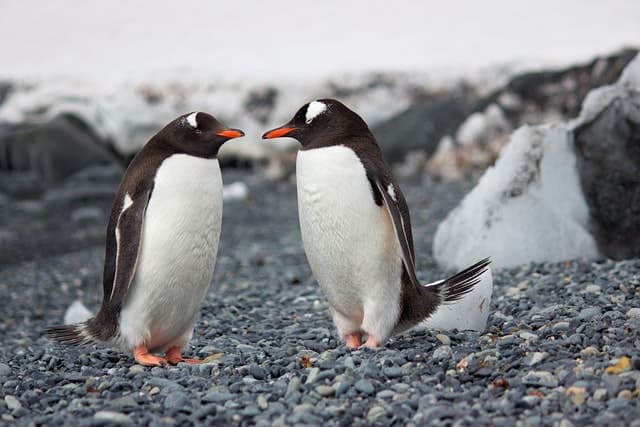
Gentoo penguins are the third-largest type of penguin. They have a yellowish-red beak, a black head with white marks above each eye, pale whitish-pink webbed feet, and the longest tail of all penguins. Chicks have grey backs with white fronts. They are the fastest underwater swimming penguins, and can also lay on their stomach and glide on the ice. They can live about 15 to 20 years in the wild. Gentoo penguins are very social and live in groups, called colonies. They prefer to breed inland and build their nest between tufts of grass. Nests are usually made from a roughly circular pile of stones and can be quite large. The female lays two eggs, and both parents alternate daily to incubate them. The Gentoo is listed as the least concerned, but in Bird Island, South Georgia, the population has declined by two-thirds in the last 25 years.
Humboldt Penguins
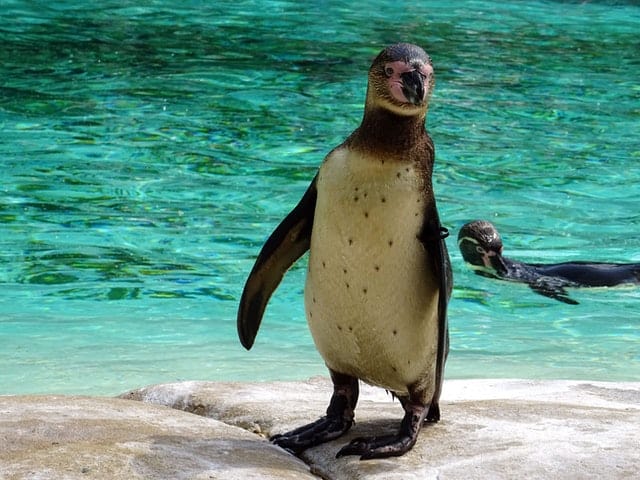
The Humboldt penguins were named after the Humboldt current. They are very fast swimmers and can dive up to 500 feet underwater searching for food. Their feet and head can blush to avoid overheating. They mate for life and both parents care for the chicks. They live in arid areas and often build their nest under cactus, and use guano as their nesting material. The Humboldt penguin is at risk of becoming extinct due to their habitat being destroyed, the harvesting of guano as a fertilizer, lack of enough food because of over-fishing, and changes in the climate.
King Penguins
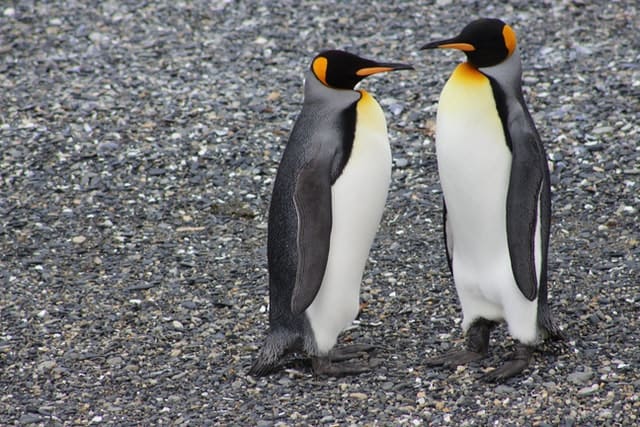
The King penguin is the second largest penguin. They are good swimmers and divers. King penguins have orange spots near their ears and on their neck. They only have one mate a year, but they don’t mate for life. They don’t build nests. Female penguins lay only one pear-shaped soft egg, that hardens and darkens later. The egg is sheltered and incubated on top of its parents’ feet. Their chicks have fuzzy brown feathers for about a year after they are born. Some populations of King penguins appear to have suffered a massive decline due to climate changes and not enough food sources caused by large-scale commercial fishing.
Magellanic Penguins
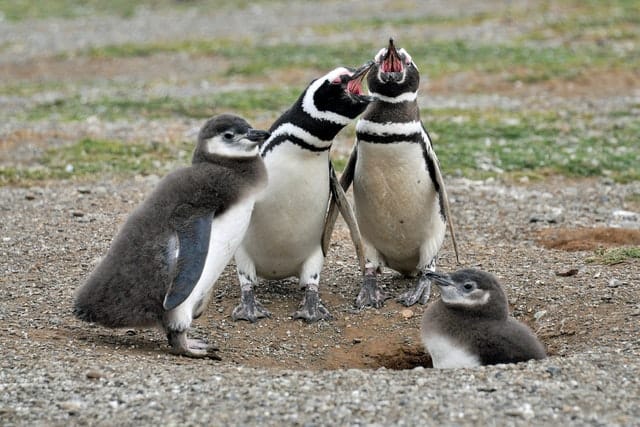
Magellanic Penguins are medium-sized penguins. They are black and white, with a broad crescent-shaped line of white feathers that go from above each eye to the chin, and a horseshoe-shaped band of black feathers that cut across the white feathers on the chest and abdomen. Chicks are brown with a white face and underside, and juveniles are brown and white with only one white band. They have waterproof paddle-shaped wings. They have a pink area above the eyes and on the base of the beak that helps them regulate their body temperature, and special glands near their eyes that help them excrete the excess salt they get by swallowing large amounts of ocean water. They are loud and could be dangerous to humans. They are excellent long-distance swimmers, and great divers, and can stay submerged for up to 2 minutes. Magellanic Penguins are social creatures as they prefer to live in flocks. They mate for life. Females lay two eggs in burrows, and both parents take turns incubating them. This species is considered Near Threatened and on the verge of becoming endangered due to overfishing, oil spills, habitat destruction, and pollution.
Southern Rockhopper Penguins
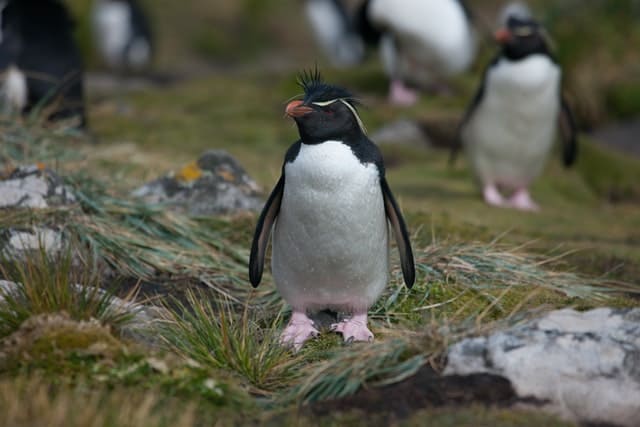
Southern Rockhopper penguins are one of the smaller species of penguins. They have a white belly and the rest of their body is black. They have red eyes, and pink webbed feet, and the adults also have yellow and black spiky feathers on their heads. Their beak is initially black but turns orange as the penguins get older. Since they live in a rocky environment, they cannot slide on their bellies like most penguins, so they have to hope to get from one place to another. They are great swimmers and can dive up to 330 feet for many minutes at a time. Females lay two eggs a few days apart and use the same nest every year. This species is one of the world’s most numerous, but the population has dropped almost 90%, mostly due to commercial overfishing, oil spills, and pollution.
Celebrating World Penguin Day With Preschoolers
World Penguin Day is the perfect opportunity to teach your children more about these fascinating creatures. Some of the things you can do are:
Present Documentaries
It is great to read stories about the different species of penguins that exist in the world to your children and share some facts about them. But when you present videos to young children, they can see these animals in action and have a better understanding of what you are trying to teach them. Two of my favorite documentaries are The March of the Penguins, which follows the Emperor penguins in Antarctica.
Another excellent documentary is the one titled Penguins, which shows an Adélie penguin starting his own family.
Play Games
I found two very good games that you can do with your children. These are:
- Welcome to Mommyhood Penguin matching game to practice shapes and colors.
- From ABCs to ACTs Penguin ABCs are an alphabet game and cutting practice activity.
Do Penguin Crafts
I found some fantastic crafts that I would like to share with you. These are:
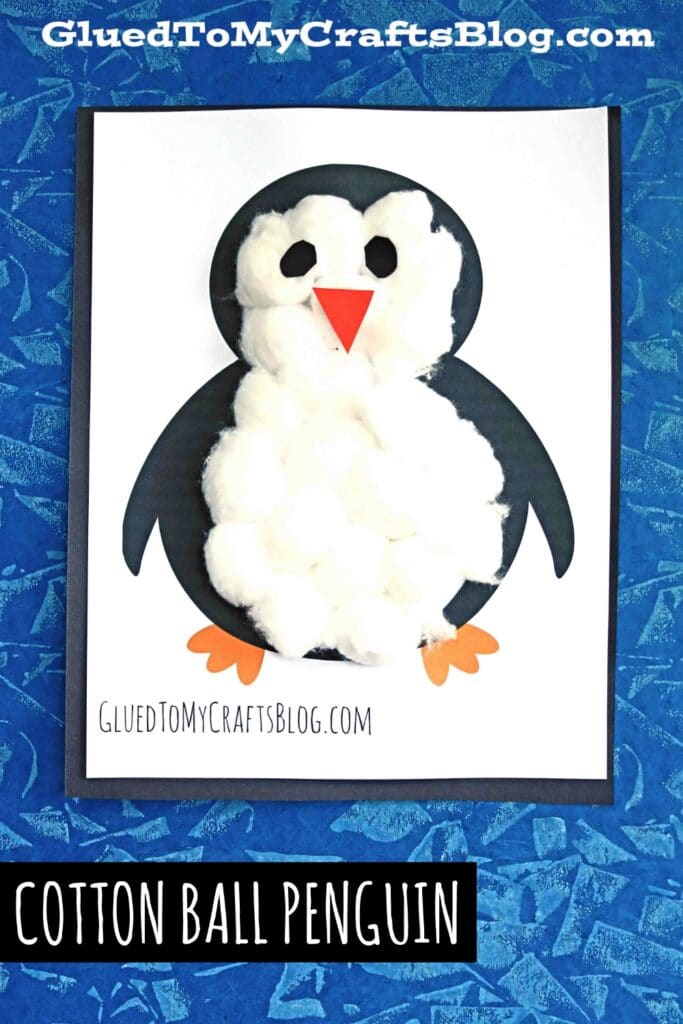
- Cotton Ball Penguin by Glued to My Crafts. She provides a free penguin template and your children just need some cotton balls, construction paper, and glue to complete it.
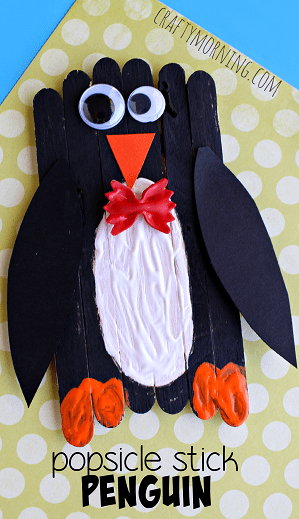
- This Popsicle Stick Penguin from Crafty Morning is a little more difficult but not impossible to do by preschoolers, and it only requires popsicle sticks, some paint, and construction paper.
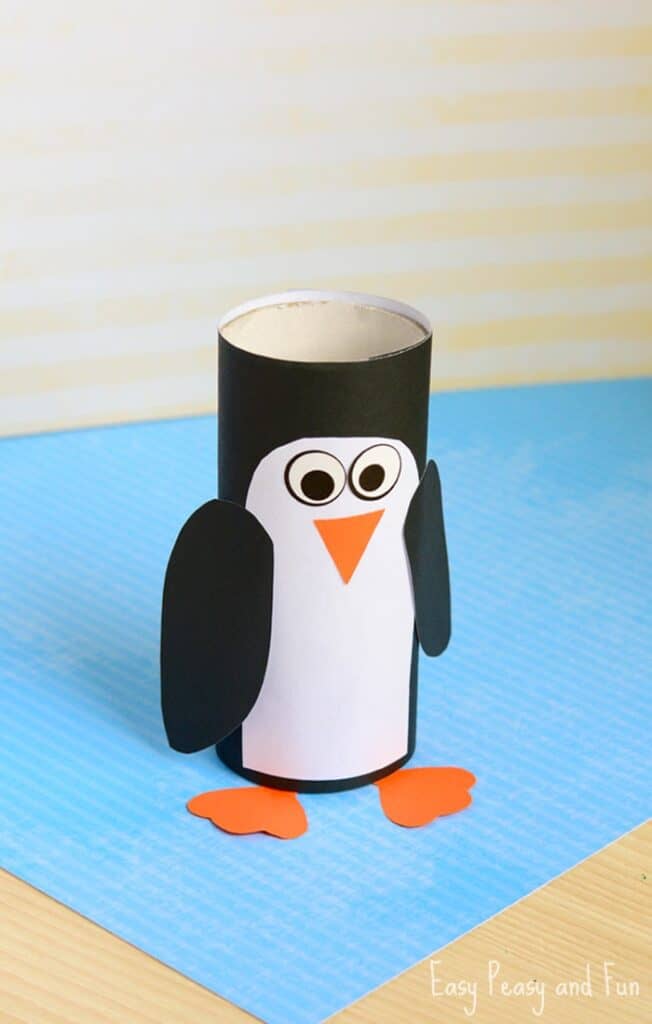
- A great way to recycle materials is by using paper rolls to make a penguin. Easy Peasy and Fun show you how.
Serve Penguin Snacks
Since penguins love to fish, Goldfish crackers come to mind as an excellent snack, but I found some others that are really cute:
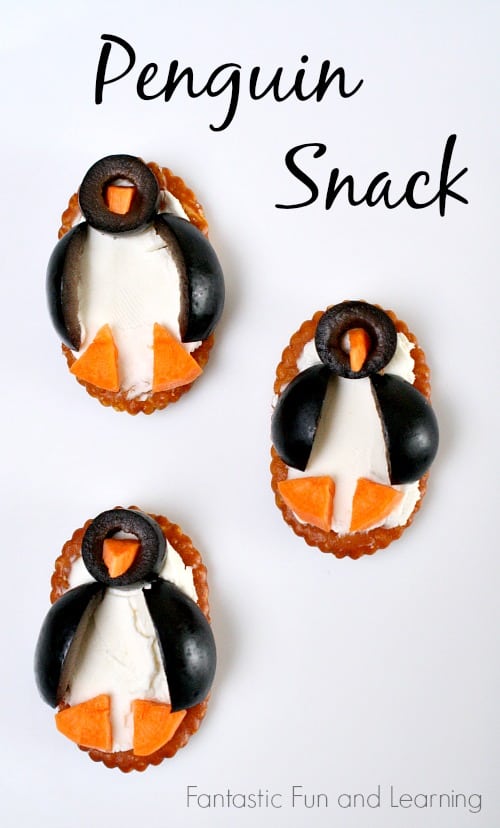
- Penguin-shaped snack from Fantastic Fun and Learning, uses crackers, black olives, cream cheese, and carrot pieces to shape a penguin. You can show your children a sample and let them do their penguin, which is a fantastic fine motor activity as well.
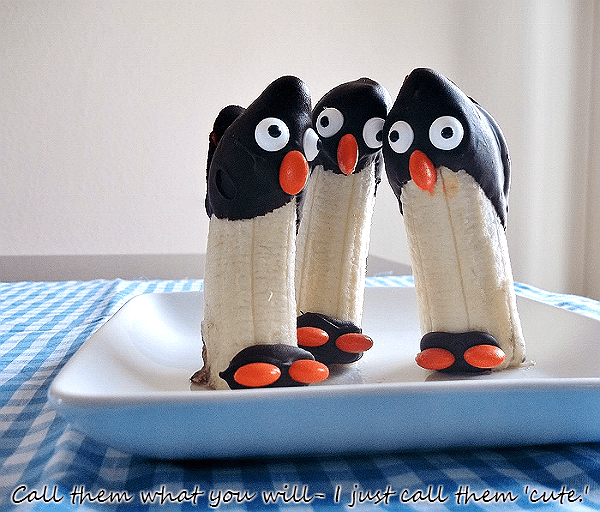
- Momma Told Me offers you a sweet Banana Penguin snack using bananas, chocolate, M&Ms, and candy. Cute, healthy, and also a snack that can be put together by your preschoolers.
Other Activities
- Have a race waddling like penguins.
- Create a campaign inviting your families to adopt a penguin through the International Penguin Conservation Group. It only costs $59.00 a year, but it will help a huge difference in the preservation of these incredible animals.
- Invite an expert to come to the classroom and talk to your children about penguins, and what we can do to help protect them.
Penguin-related Books
Reading to your children about penguins is one of the best educational activities you can do to teach your kiddos about anything.
Many books address penguins, both fictional and non-fictional. You can find books about these great birds at your local library, used bookstore, and on Amazon. I personally love Amazon because you can get anything fast, and I love to constantly add books to my collection. These are my favorite books about penguins. I added my Amazon links to make it easier for you, just by clicking on the titles.
Pin It For Later
If you are in a rush and don’t have time to read the post and download the printable but want to save it for later, pin it to one of your Pinterest boards for later.

I hope you enjoy these ideas and help you have fun during the World Penguin Day celebration with your preschoolers. To get the FREE pack, you just have to click on the link below and put your information, for an immediate download.
Be happy, safe, and creative. I wish you well.
Love,

P.D. Please let me know if any of these ideas worked for you, or if you think I need to add or replace something. My goal is to help you in any way I can and I don’t like anything better than to post something that you might find useful. Also, if you came up with different ideas and want to share them, I will love to post them as well.

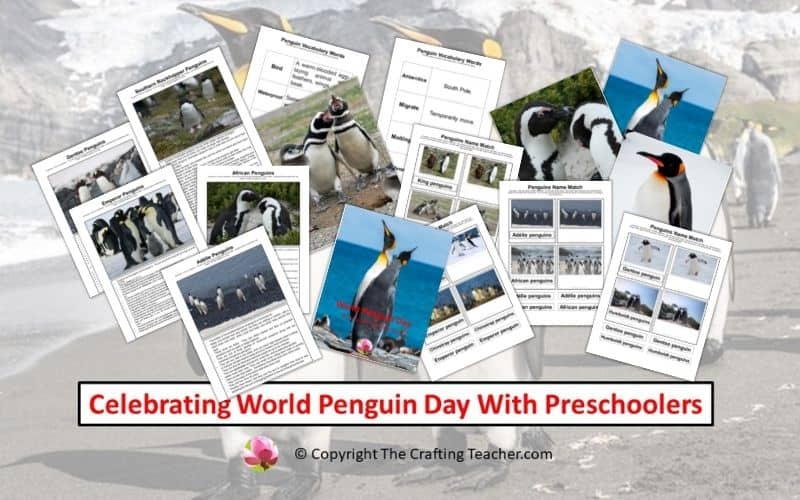
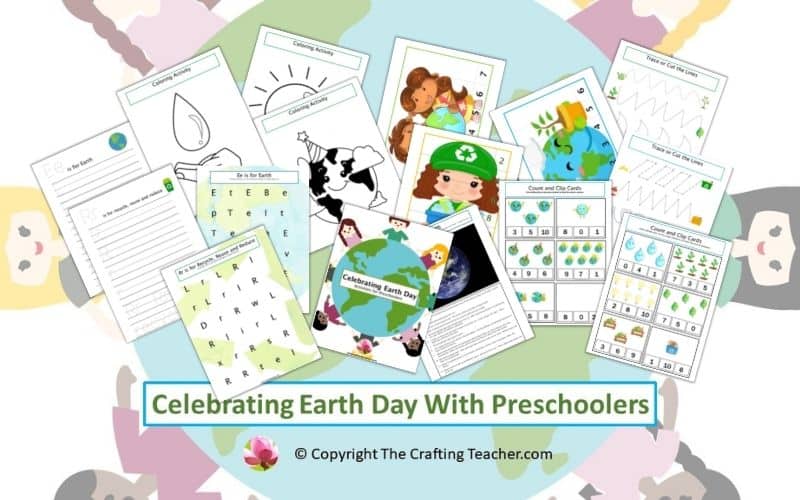
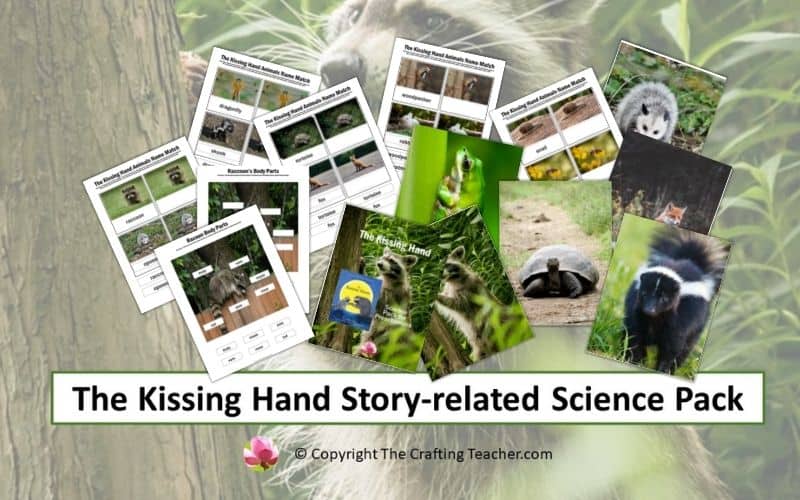
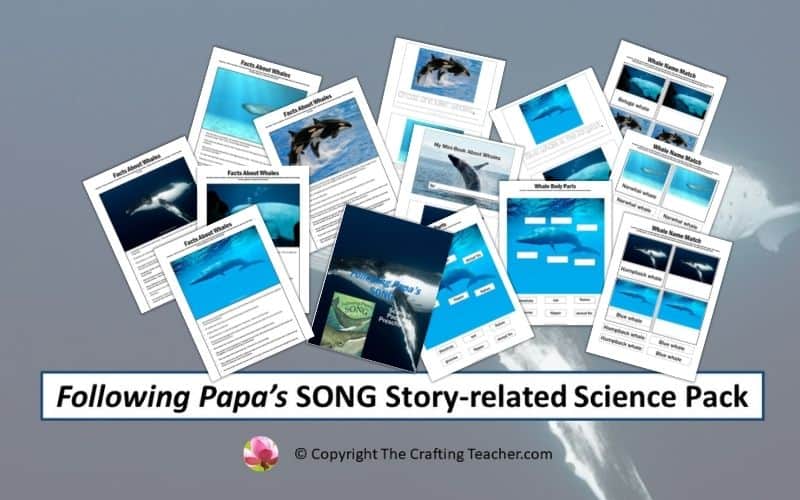
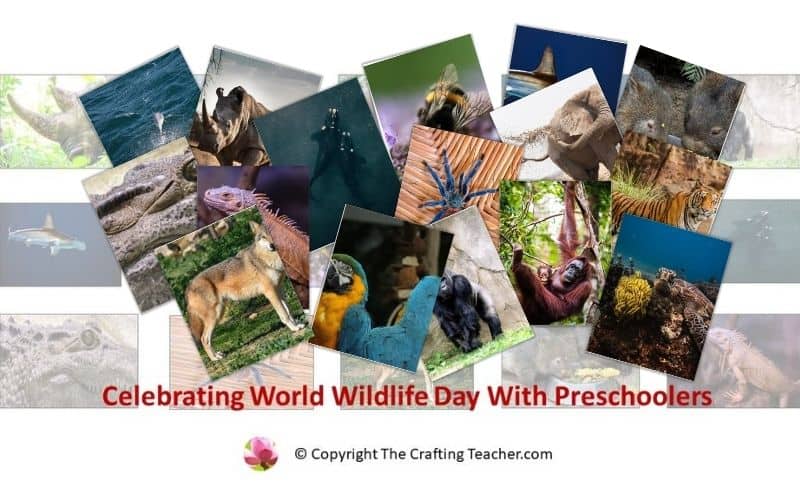
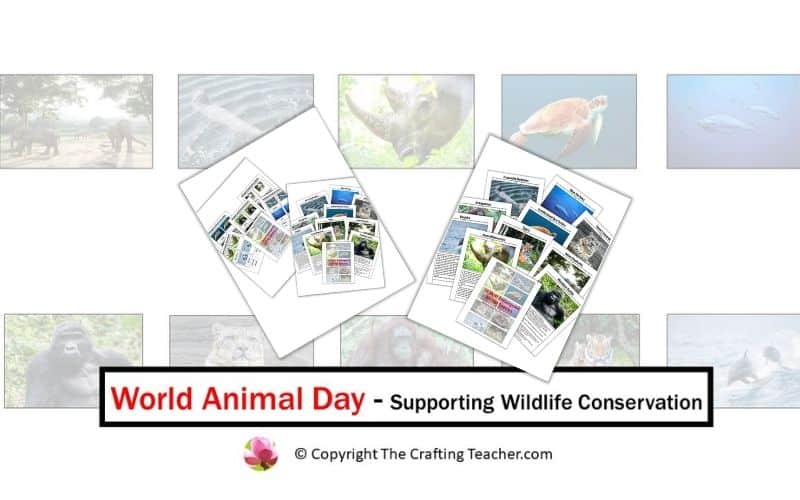
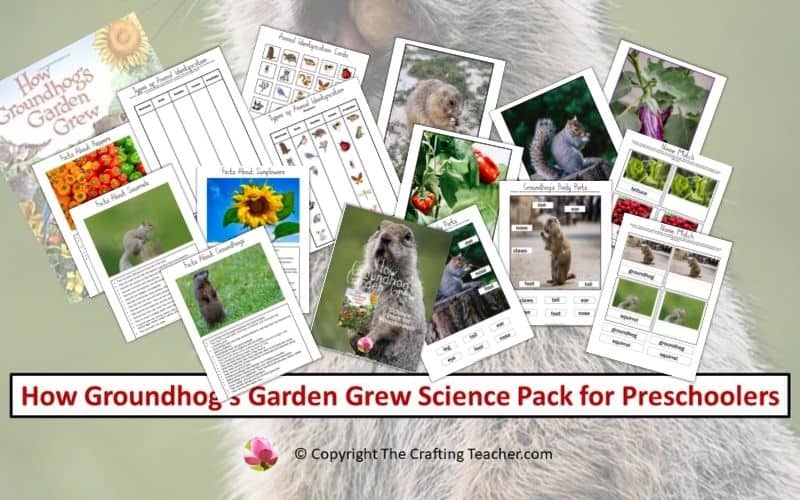
Very good post. I absolutely appreciate this website. Stick with it!
Thank you. I appreciate your feedback.